SPOILERS? OH, I‘VE GOT YER SPOILERS RIGHT HERE!
In the late spring of 1977, I did something that I’d never done before. I exited the movie theater on East 87th Street in New York City and and immediately walked back to the entrance on 3rd Avenue. Then I went up to the box office, bought another ticket, and headed back into the theater to watch the same movie again. Most of the audience did the same thing.
It wasn’t just that Star Wars was really good. No, it NEEDED to be watched again…to take in everything it was showing us, to catch things we probably missed, and just to try to process this life-altering, even world-altering cinematic experience.
While I’m not saying that the sixth episode of STAR TREK: PICARD‘s third season, “The Bounty,” is another Star Wars, the fact remains that for the first time in I-can’t-remember-how-long, I finished watching a Star Trek episode and immediately began watching it again. There was just so much to see, to experience, and yes, to LOVE about these 52 minutes, and even after two viewings, I’m still trying to process it all!
So rather than trying to find some unifying theme for this blog, I’m just going to watch the episode for a third time and write down my thoughts as I have them…
VADIC KILLS THE CAT
One of the “bibles” for Hollywood screenwriters is a book by BLAKE SNYDER titled Save the Cat! It literally argues that all movie scripts have the same basic story structure, and one of the common elements is when the main character “saves the cat” (like Ripley did the movie Alien) that shows the viewer that the main character, for all their flaws, is inherently a good person and worthy of being the protagonist of the film. Watch for it, and you will almost always see a “save the cat” moment.
After reading his book, I realized that there is also a technique used by writers that I like to call “kill the cat.” The villain does something nasty and vile, often to someone who doesn’t deserve such harsh treatment. The bad guy beats up or kills an innocent victim…or maybe they even shoot one of their own henchmen. “Yeah, this is one bad dude!” You’ll see this a lot, too, if you watch for it.
And in fact, Vadic “kills the cat” when she shoots one of her own Changeling henchmen (or rather, has one of her other henchmen do it) simply because he’s disagreeing with her. So, yes, we’ve now established what a truly evil baddy she is! (By the way, please excuse my pronouns. If you think about it, any Changeling really should be a “they.”)
But here’s the problem with that scene…
In the history of the Great Link, we’re told, NO CHANGELING HAS EVER HARMED ANOTHER! Of course, Odo becomes the first, in the DS9 season three finale “The Adversary,” and boy, does that have ramifications! But now in “The Bounty,” Vadic—who is now officially established as a Changeling—kills one of her own people without a second thought. This bothered me…although who knows? Maybe it’ll be explained.
Two other things bothered me. First, why does a Changeling need to smoke? I doubt nicotine is addictive to a shape-shifter, even if they’re forming their own lungs. Is she doing it for effect? Who is Vadic trying to impress? Her crew is made up of other Changelings, none of whom appear to smoke (they only turn to ash when killed). And second—although this is minor and unavoidable because AMANDA PLUMMER is so short—but why wouldn’t a Changeling make herself taller, especially when Riker towers over her?
Okay, enough complaining! Onto the good stuff…!
WHY JACK IS SO WACK
Last week, I wondered what had made Jack Crusher into a combination Jason Bourne, Batman, and The Terminator. And I’m still wondering! Beverly says his hallucinations were the result of Irumodic Syndrome, passed onto him by his father. Fine. Perhaps a little young for such severe symptoms, but I’ll go with it. However, even at his worst, Jean-Luc Picard never became a living weapon! Last week, Jack took out FOUR armed Changelings in less time than it took you to read this paragraph! Maybe he’s just naturally Jason Bourne meets Batman in…but I’m still dubious.
REUNION
This isn’t the first time Worf has been involved in a “reunion” with long-lost friends and family. And the scene in the transporter room was a mix of satisfying and frustrating. I loved the warm embrace with Beverly and the humorous lines about Picard’s wine and Worf’s newfound-deep thoughts. On the other hand, the awkwardness when Seven and Raffi first speak made me wonder if the writers had any idea what to do with that relationship either. The lesbian connection was stuffed into the sack at the very last moment of season one and then became a tedious will-they-or-won’t-they dance for nearly all of season two. At times, it’s painful to watch them interact…and still doing almost nothing to help better establish the character of Raffi.
TWO MINUTES AND 36 SECONDS OF NON-STOP EXPOSITION!
Ah, exposition! It’s an unavoidable element of serialized TV storytelling that requires that the viewer be brought “up to date” (even if they’ve supposedly seen all of the episodes up until then plus the “Previously on…” segment). And if there is a mission to accomplish, you must also explain the details of that mission…especially if something is going to go wrong. After all, how can you know something went wrong if you don’t know what was supposed to happen in the first place?
Back during the run of The Next Generation, long exposition scenes typically happened in the observation lounge behind the bridge at the curved conference table. Directors hated shooting those scenes because they had the potential to bring the momentum of an episode to an absolute crawl if there was too much that needed explaining.
In that same tradition, this episode’s exposition took place in the conference room behind the bridge of the U.S.S. Titan, and it had a LOT of points to cover:
- Who the enemy is (rogue Changelings) and why they want to attack Starfleet (brief history of the Dominion War).
- Their nefarious plot is somehow tied to Starfleet’s Frontier Day (happening in less than 48 hours!).
- So they need to go to Daystrom Station (and briefly explain to the viewers what that is).
- The Changelings stole the portal weapon from Daystrom to cover up the theft of something even more deadly.
- To find and retrieve this weapon, they need to get ahold of the project manifest, which is located on the station.
- But it’s guarded by a lethal A.I. system that thinks and adapts.
- However, they have a key to get them inside.
All of this information is delivered during a two and a half minute scene that, while definitely not my favorite part of the episode, was still brilliantly directed. Sure, it had a LOT of information convey, but through a combination of different camera angles, quick cuts to reaction shots, short pieces of dialog by diverse characters, a few analogies (for people who don’t speak “technnobabble”), and the occasional sprinkle of humor (“Excellent use of the word ‘burgle,’ Admiral!”), the scene doesn’t drag all that much and gets this exposition out of the way fairly quickly so we can enjoy the rest of an awesome episode.
Take a look…
WAIT, SEVEN ISN’T GOING???
Okay, I get that the plot requires Riker to be captured so that Vadic can bring in Deanna at the very end, but Riker’s presence doesn’t make sense otherwise. Worf, yes, because he’s super-powered ninja-Klingon. Raffi, yes, because she’s kick-ass. And Seven, of course, was a Fenris Ranger and a former Borg who still remembers a ridiculous amount of information even though she is no longer assimilated. Riker? He’s kinda old and, by his own admission in episode two, his knees hurt. Seven should be going. Riker…not so much.
The brief scene in the transporter room does give viewers an opportunity to see Raffi and Seven being awkward again while Worf confirms that the two women have indeed broken up (I think). However, some more humorous banter between Riker and Worf just adds to the overall fun of the episode….quite a difference from the seriousness of the previous few episodes!
LIGHTS, CAMERA, ACTION, AND SUSPENSE!
Once the away team arrives on Daystrom Station, the episode splits into parallel action (two simultaneous stories cutting back and forth). This is a very successful storytelling format, as the focus can shift back and forth between action and take-a-breath. But initially, there’s excitement in both stories as Riker, Worf, and Raffi test out their key while Starfleet vessels arrive at the station, and the Titan has to hightail it outta Dodge!
And while the entire sequence was brilliantly acted, shot, scored, edited, and lit (they finally fixed the darkness problem—mostly!), I have to give major props to actress ASHLEI SHARPE CHESTNUT for being able to successfully get through this cruel line of dialogue…
Seriously, just try to memorize that and say those words with passion and intensity without tripping over your tongue sixteen times! But that’s the job when you’re acting on Star Trek. Welcome aboard, Ashlei.
OH, I CAN HEAR THE COMPLAINTS ALREADY!
I’m writing this blog before checking reactions on Facebook, but I suspect that some fans (especially older ones) won’t appreciate the “chamber of horrors” that is Daystrom Station—a sequel to the Genesis Device, the exhumed remains of James T. Kirk, genetically-modified attack tribbles! “This wasn’t the optimistic future that GENE RODDENBERRY imagined!” they will shout.
Well, sorry, but if you can’t get over things like this, you are forgetting the true power of Star Trek. What do I mean? Back in 1996, five and a half years before the terrorist attacks on 9-11 that changed the world forever, Deep Space Nine aired the two-parter “Homefront” and “Paradise Lost.” A terrorist attack on Earth and the resulting (over)reaction of paranoia and fear across the Federation eerily predicted what would happen at the World Trade Center and Pentagon half a decade later and in the years following. Before that two-parter, the idea that the Federation could declare martial law for its own people would have seemed far beyond what the Great Bird of the Galaxy would ever have allowed on his creation. And yet, those were two of Star Trek‘s most memorable, impactful, and prescient episodes.
Does that mean that I think the U.S. government is creating killer tribbles? No. But Star Trek and science fiction have always allowed viewers a chance to look at the world through a “warning” lens, and the world of today is a lot different than it was in 1966!
REUNION, PART II – MORE EXPOSITION
Ah, exposition! It’s an unavoidable element of serialized… Oh, wait! No need to explain it all over again. But that’s the thing with exposition. If there’s a lot of it, a good writer and director need to spread it out and, if possible, give it a little variety. So when Geordi and his other daughter, Alandra (played by LEVAR BURTON’s real-life daughter, MICA) arrive, there’s some quick transporter room plot and character information dumped into the episode:
- Geordi is now a Commodore (Seven greets him as “Commodore LaForge”).
- Geordi isn’t going to be antagonistic (he gives Beverly a big hug).
- Geordi’s relationship with his daughter Sidney is strained.
- The entire star fleet will be gathering in one location for Frontier Day (what could possibly go wrong with that plan?).
- Alandra is Sidney’s sister and, therefore, also a daughter of Geordi.
All of this was conveyed in just 85 seconds of screen time…half the time of the previous exposition scene, and no conference room required! Compare this scene to its predecessor above…
POP GOES MORIARTY!
This was not only a cool scene; it was a very significant moment for Star Trek: The Next Generation. Oh, sure, it was fun to see Pr. Moriarty for a short bit (although it wasn’t the actual Moriarty from TNG; it was still the same actor, the excellent DANIEL DAVIS). But now the importance of having Riker there was underscored—literally!—by both his knowledge of music and his memory of his first meeting with Data.
And that’s why this moment was so significant! Y’see, this season will be the last time fans see Data (who has already died twice). However, those flashbacks to “Encounter at Farpoint” were the first time fans ever saw Data! And so we were treated to a very special set of bookends to mark this unique treat for fans.
Marvelous!
A LOVE LETTER SCENE TO STAR TREK FANS
Just watch…
Now, I’ll be honest: Voyager is NOT my favorite Star Trek series. In fact, it barely makes the top five. But whether it was the subtle music, JERI RYAN’s beautifully soulful acting, or just remembering the seven years I spent watching each episode of that show…well, I teared up a little during that part.
Also, bravo for FINALLY showing a classic TOS Constitution-class starship! None of those reimagined designs shown in DISCOVERY or STRANGE NEW WORLDS!! This is now CBS canon, folks! That said, there was a never a U.S.S. New Jersey NCC-1975 in the Franz Joseph Star Fleet Technical Manual (also 1975). But hey, fuhgeddaboudit! Showrunner TERRY MATALAS was born in Raritan, New Jersey in 1975.
Also, note that this is the first time we’ve ever seen in official canon the refit Enterprise NX-01 which DOUG DREXLER designed for the never-produced fifth season of Star Trek: Enterprise. For a techie-Trekkie like me and many others, this was a magical moment!
And of course, this scene wasn’t just indulgent fan service. Seeing the Dr. McCoy-rechristened HMS Bounty Klingon bird-of-prey from Trek IV provided a valuable tool to advance the plot.
At this point, any fan still trying to complain that season three of Picard “isn’t Star Trek” needs to be put in time-out!
ALL IN THE FAMILY
During the run of TNG, we met almost everyone’s parent(s) at least once. In the case of Deanna Troi, it was MANY times! And of course, Wesley’s mother was the ship’s Chief Medical Officer. But we also met Riker’s father, Worf’s adoptive human parents, Geordi’s parents, and even Data’s “father,” Dr. Noonian Soong. In nearly all of those cases, our perspective was from the adult child’s point of view.
Now, however, each of the Next Generation characters has a child of their own. Granted, Beverly and Worf’s kids were on the Enterprise-D during the series…and Data built his own daughter Lal. But now Picard, Riker, Troi, and Geordi also have children of their own, and so our perspective changes as we look at the next next generation through the eyes of their PARENTS.
This unexpected aspect of Picard‘s final season is providing a fascinating and compelling flavor to this series. We can watch Jean-Luc Picard’s mix of frustration and hope in getting to know Jack. And now we can trace Geordi’s character arc this episode from desperately wanting to protect his children (as any parent would) to realizing that they are very much like he was, wanting to do their part to save Starfleet and the Federation. The scene where Geordi shows up in Engineering just in the nick of time to help Jack and Sidney install the stolen cloaking device on the Titan, while certainly not unexpected, was still wonderfully satisfying. And it led into a VERY exciting rescue sequence.
RESTORING THEIR DATA
Next to SIR PATRICK STEWART himself, I’ve always felt that BRENT SPINER was the most talented actor of the TNG main cast…although all of them are awesome. And even though it was brief, Brent “toggling” among the four personalities of Data, Lore, B-4, and Altan Soong was a whole lot of fun and promised more of the same in the final four episodes…as it was a really cool concept worthy of any decent TNG episode. Talk about a schizoid man!
Also, something I didn’t notice the first time I watched was Data’s answer to the question of what was stolen from Daystrom. “Jean-Luc Picard,” he said, as he looked at his former captain. Data said it three times, and we all thought he was glitching. But in fact, Data was answering the question! Now, what the Changelings want with Picard’s mortal remains (remember: he’s now a synthetic) along with Picard’s only offspring is anyone’s guess. I mean, I know it can’t be good, but just how bad could it be???
THE GANG’S ALL HERE!
With the appearance of Deanna Troi at the very end, we now have every member of the TNG main cast on screen in the same episode/movie for the first time since the ending of Star Trek: Nemesis back in 2002. That’s something VERY special, and sadly something that won’t ever get to happen for Deep Space Nine because of the tragic passing of RENE AUBERJONOIS and ARON EISENBERG…although there’s still time left for a Voyager or Enterprise reunion.
Of course, the characters aren’t all together quite yet. Deanna (assuming that’s indeed her and not a Changeling—although I assume she’s real because Vadic order her crew to locate any friend Picard might go to for help) is being held hostage, along with her husband, and Worf is now setting off to find his friend. So next episode will feature Jean-Luc, Beverly, Geordi, and some form of Data together, Riker and Deanna together, and hopefully Worf kicking some Changeling ass in order to save them!
By the way, note that Vadic was seen in the opening and closing scenes only. Considering that she is the main baddie right now, this was an interesting choice by the writing team…and one that I think worked out well. Because of an amazing performance by Amanda Plummer, Vadic dominates the scenes she appears in. Having too much of her, I think, would have taken away from the rest of the episode.
SIX DOWN, FOUR TO GO!
It’s hard to believe that, in less than a month, Picard season three will be over, and we will never see the TNG family together again (except in our dreams, at the occasional mega-convention, and on reruns). But ten episodes is better than no episodes. It’s even better than nine episodes!
The strange thing is, unlike the first two seasons of Picard and all four seasons of Discovery, I’m not really ready for this all to end. Those other season finales were welcome exits from, at best, mediocre Star Trek. But Picard is going out on the highest of high notes, a precious gift to fans in its final season.
Of course, an even greater gift would be if this final season were to spawn a NEW Star Trek series with the same creative team because they definitely GET Star Trek…and that’s all we fans ever really wanted.

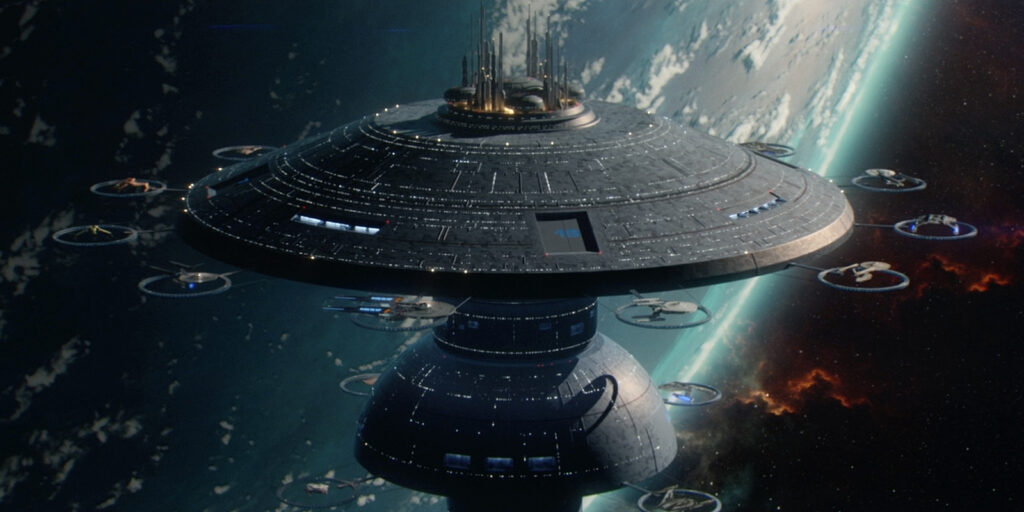
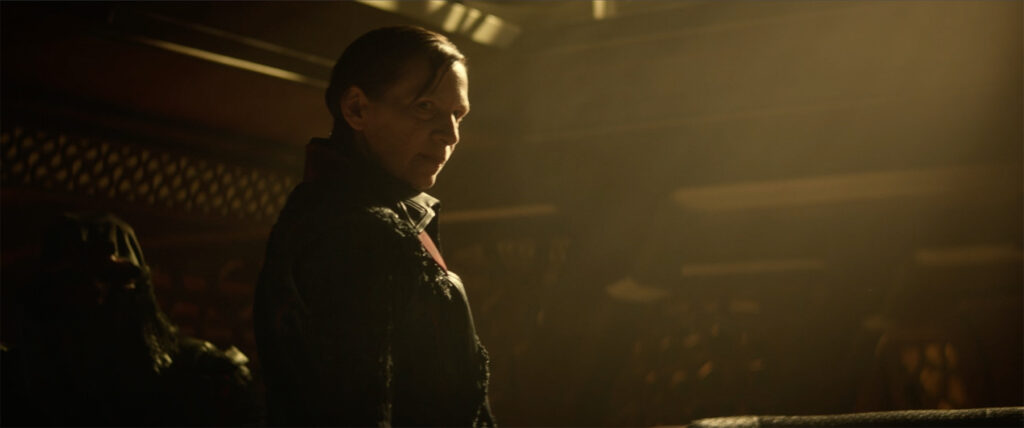
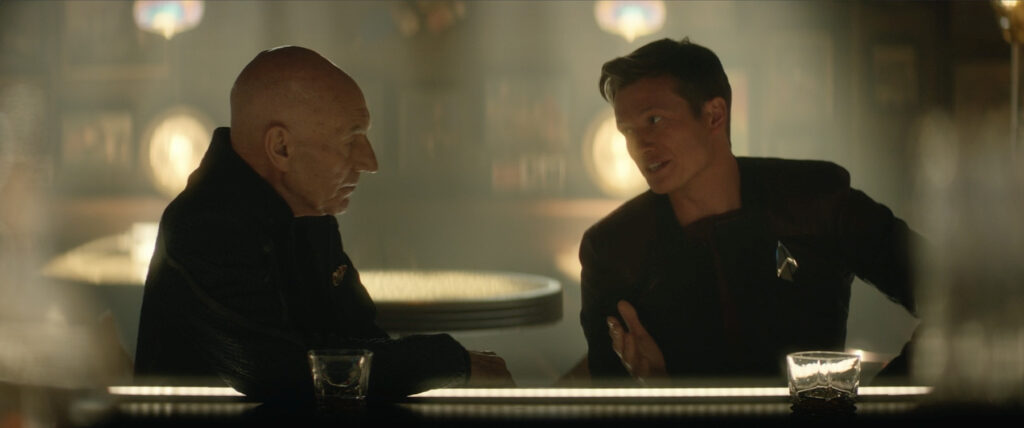
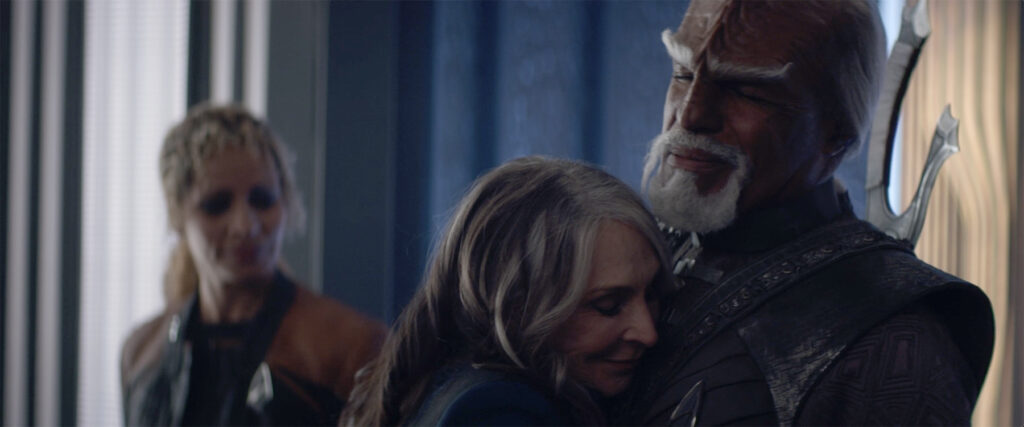
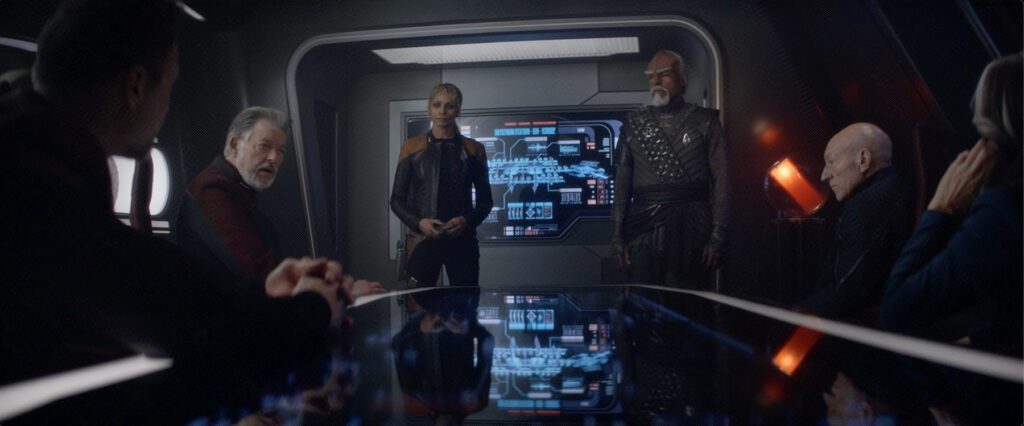
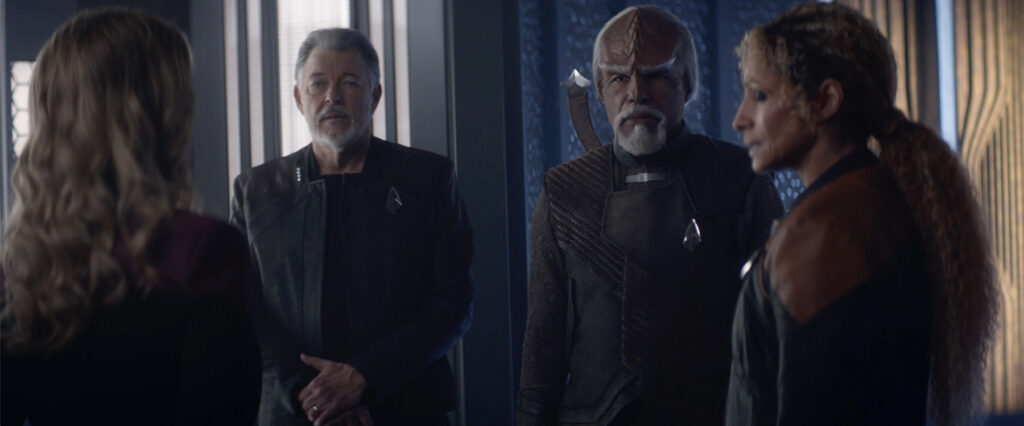
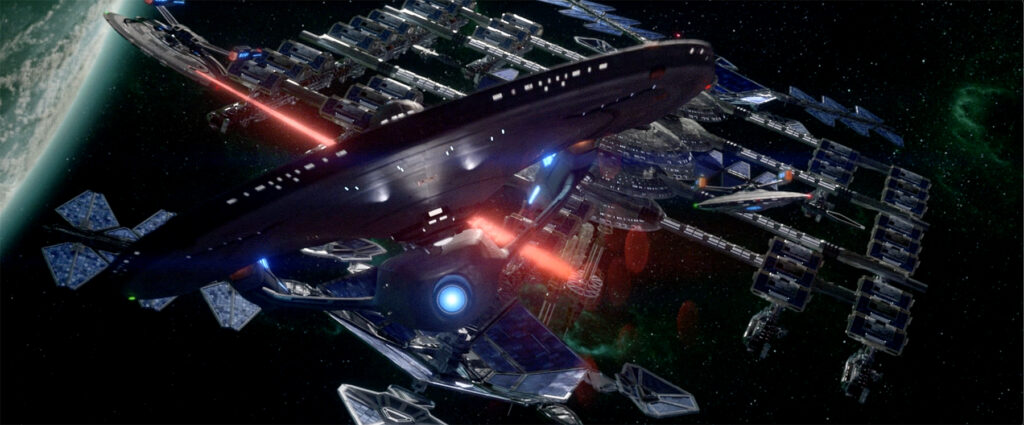
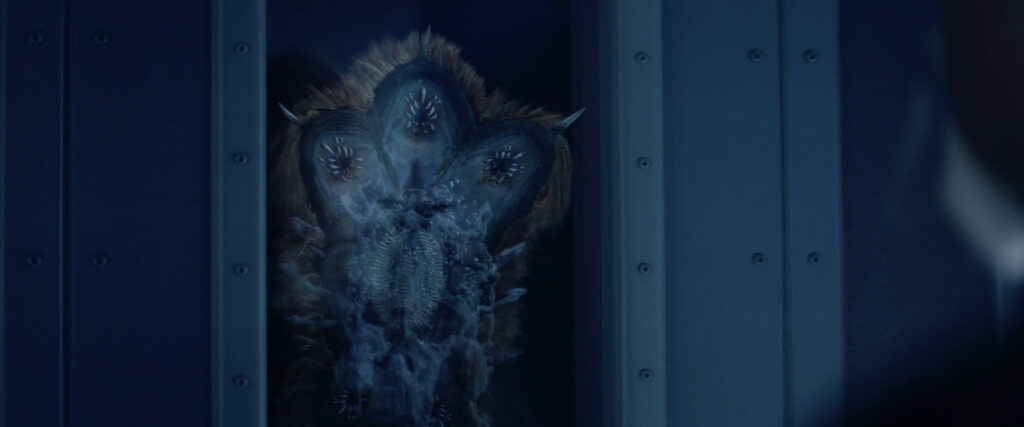
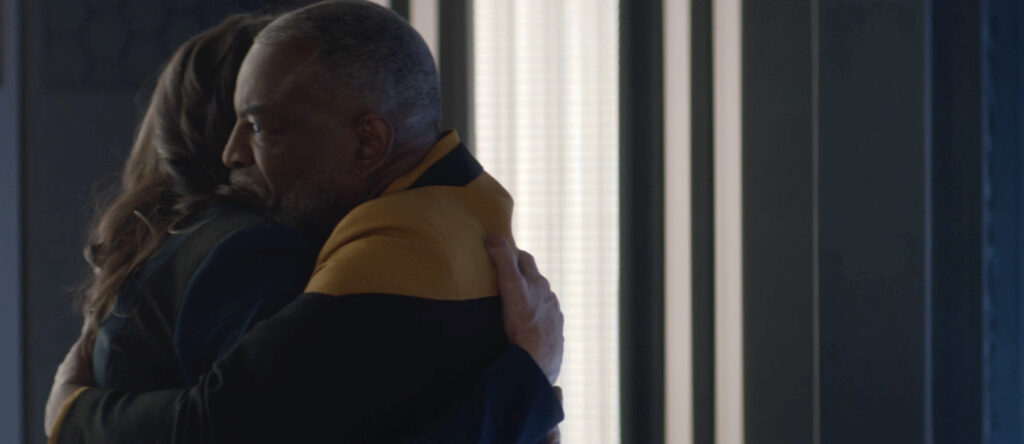
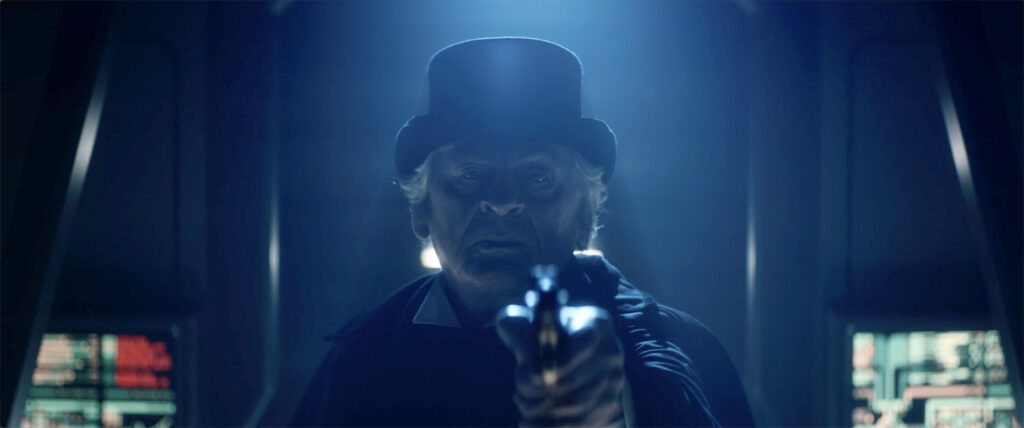

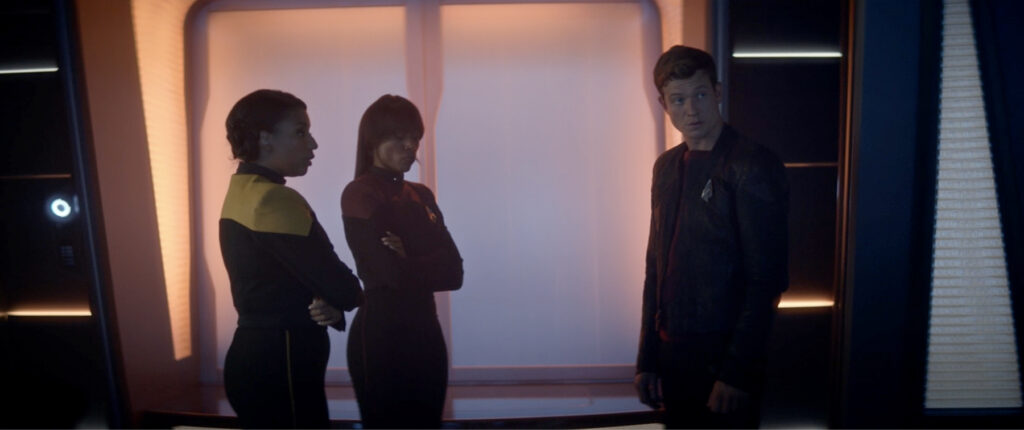

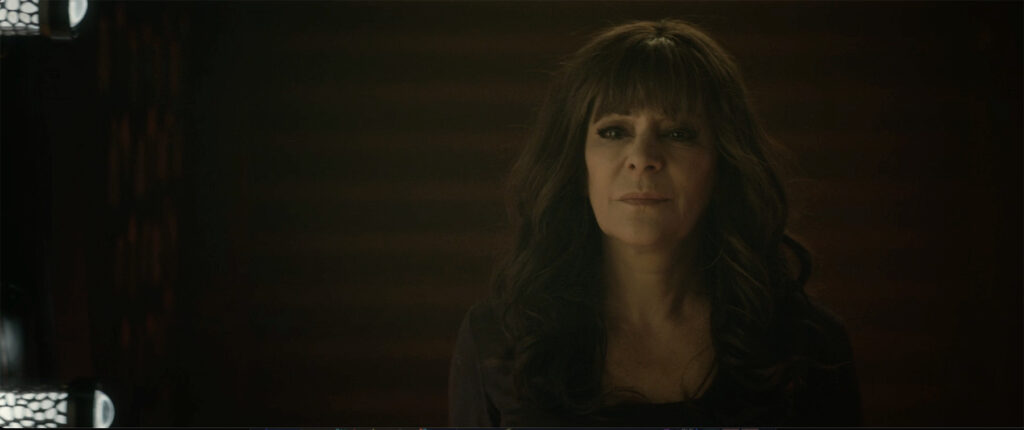

Although I agree with almost all your review, I’m left puzzled by why so many think so highly of Amanda Plummer as Vadic, is doing such a fabulous job. From my perspective, it seems just about any actor could do the same job? What am I missing? If I had to pick one actor I think stands out this season, it would be Dorn, as WORF! Having been recreated in a sense. It’s his character that gives me whiplash the most. Even Riker’s line: “we’re all gonna die” plays to it. Anyway, with Disco & Picard ending, I feel pretty confident, there will be at least one new show in the works. Seems Paramount has found the goose that Lay’s the latinum Star Trek Eggs, FINALLY!
To better illustrate why Amanda Plummer is so impressive as Vadic, I need to take you to Natalie Portman’s performances in the Star Wars prequel trilogy. Natalie Portman is an amazing actress, but George Lucas is a horrifically bad director of actors. He has them get in front of the camera, deliver their lines once or twice, and then he goes and hides in the editing tent doing all the techie work. He’s a wonderful technical director but not an actor’s director. In some cases, George got lucky. In “A New Hope,” Lucas had amazing actors like Sir Alec Guinness, James Earl Jones, and Harrison Ford delivering what was, let’s be honest, mediocre dialogue. Now, Natalie Portman is also a very gifted, Oscar-caliber actress, but she needs a good director to bring that out of her, and that’s why her performances as Padme fell so flat in three different movies. Ewan McGregor, on the other hand, was able to compensate for mediocre, ambivalent directing by really knowing his character and doing most of the work himself, as the actors had, similarly, in “A New Hope.”
So no, you can’t simply give the villain’s lines to just any actor and get a quality performance. For an even better example, watch this video…
Beyond making the character of Vadic mosre “disgusting” and thus more “vile”, I can see no reason to make the character a smoker. I mean, come on, smoking? Even though at this stage humanity hasn’t quite grasped that tobacco is one of the worst addictions that there is — apparently we’ve learned by the 23rd century? Alcohol, though, seems to keep on keepin’-on despite it’s addictive and harm to health.
To be honest, other than this smoking of a character, the only other “what?” moment that comes to mind from a single viewing IS the killing of the Changeling. I suppose, as you say, it was to re-establish, or deepen, our “hatred” of Vadic.
Yeah, the smoking is definitely an odd choice. I felt the same way about Rios’ cigars. The last thing you want inside of a sealed tin can where the air you breathe is limited, recycled, and the only thing keeping you alive is someone smoking a cigar! 🙂
P.S.: To last comment… I guess there is one more “gripe”. You must have a larger TV than I–and likely newer! My 720p old TV still has Picard, like ST:D (though I admit ST:D takes “dark” lighting to the extreme still!), way too dark to capture details that would improve the “atmosphere” surrounding our characters.
Even in a dark room these episodes are still too dark to get clear imagery of the “imagery”. I fail to see why it has become a “norm” to place darkness interior to a “spaceship”. Just because space is “dark” doesn’t mean the interior of a ship in space would/should be. Lighting, there is such a thing as lighting the interior space. In fact, good lighting makes for a better ability for the crew to see. Our eyes function better in proper lighting. So… properly light the interior of the entire ship; it seems corridors are better lit than the bridge. Corridors are a less important than any function on the bridge; so light it better.
The sixth episode seems to have corrected the darkness problem…mostly. That was a streaming/encoding issue, not a choice to be so dark. That said, the general move in recent sci-fi has been toward darker sets, which allow for more dramatic lighting of characters’ faces and bodies. You can complain that humans want more light in space, but artists and DPs want less. So until Star Trek is real and not a TV show, the DPs get to win. 🙂
I’ve been particularly alert for any hints about the Season 3 mystery “why is Jack Crusher so important?” which was set up in episode 1. The Episode 7 trailer emphasizes that he’s incredibly vital. And somehow Picard’s ashes are related.
I’m not going to go into a full blown speculation but I do remember a clue that resonates was spoken in an earlier episode “the only Borg so deadly, they gave him a (expletive) name.”
I also took optimistic note of “Terry Matalas reveals that he wants a show continuing the 25th century to be called Star Trek: Legacy.”
Star Trek: Legacy was “a 2006 real-time tactics space combat video game for Microsoft Windows and Xbox 360 developed by Mad Doc Software and published by Bethesda Softworks in association with CBS Paramount Television and CBS Consumer Products.” As such, the name might be “taken.” That said, CBS is the rights holder, and the game is probably out of print/circulation by now. Other obvious names for the new show could be “Star Trek: Titan” or “Star Trek: The Next Next Generation.” (I’m just kidding about the second one…as I’ve been kidding about “Star Trek: Shaw.”) Also, “Star Trek: The Adventure Continues” could work, as well.
I did hear that Alex Kurtzman is close to making an announcement about the future of Star Trek after the endings of Picard and Discovery. So we’ll see.
Perhaps Star Trek is out to make
“Smoking Great Again”? Besides, maybe whatever a changeling manifests isn’t really an actual tobacco product? Hmmm?
And I do t recall seeing Rios actually producing any smoke on board his ships. Maybe it was a affect or security blanket? Granted, on earth he could indulge his desires. Also, in the 25th century, it’s possible they both, Rios & Vadic are just Vapping?
Vaping doesn’t produce the same smelly fumes as cigarettes, but the secondhand vapor contains chemicals and compounds that pollute the indoor air…never a good idea for an enclosed environment!